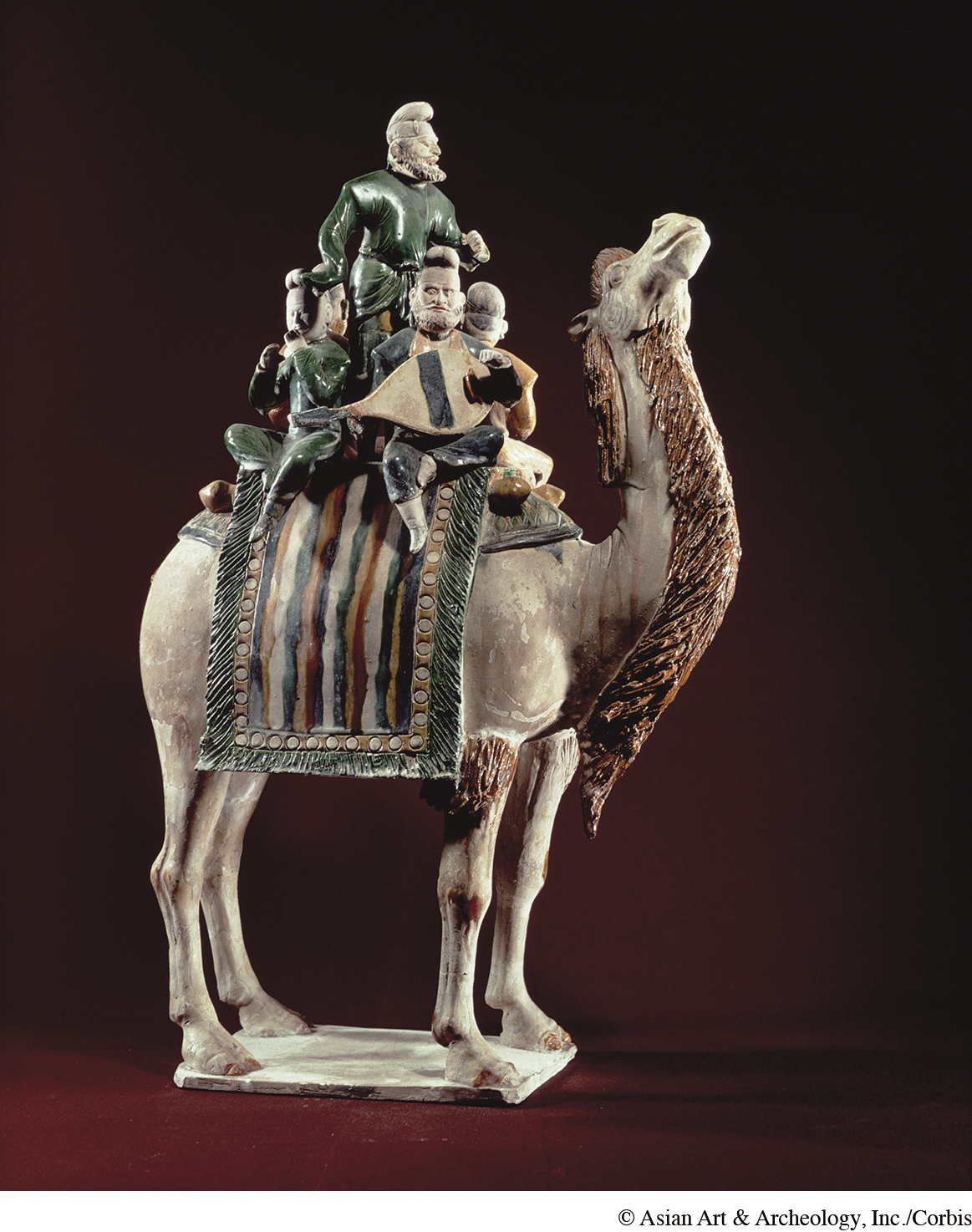Introduction to Chapter 7
CHAPTER 7
Commerce And Culture
500–

SilkRoads: Exchange across Eurasia
The Growth of the Silk Roads
Goods in Transit
Cultures in Transit
Disease in Transit
Sea Roads: Exchange across the Indian Ocean
Weaving the Web of an Indian Ocean World
Sea Roads as a Catalyst for Change: Southeast Asia
Sea Roads as a Catalyst for Change: East Africa
Sand Roads: Exchange across the Sahara
Commercial Beginnings in West Africa
Gold, Salt, and Slaves: Trade and Empire in West Africa
An American Network: Commerce and Connection in the Western Hemisphere
Reflections: Economic Globalization—Ancient and Modern
Zooming In: The Arabian Camel
Zooming In: Thorfinn Karlsefni, Viking Voyager
Working with Evidence: Travelers’ Tales and Observations
“In the spring of 2004, I was looking for an appropriate college graduation present for my son Ateesh and decided on an Apple iPod music player…. I placed my order online…. I was astonished by what followed. I received a confirmation e-
And in the speed of the transaction, it surely was. But from the perspective of world history, exchange among distant peoples is not altogether new, and the roots of economic globalization lie deep in the past. In fact, just three years after purchasing his son’s iPod, Nayan Chanda wrote a well-
The exchange of goods among communities occupying different ecological zones has long been a prominent feature of human history. Coastlands and highlands, steppes and farmlands, islands and mainlands, valleys and mountains, deserts and forests—
Why was trade important? How did it generate change within the societies that it connected? Economically speaking, commerce often altered consumption and shaped daily life. West Africans, for example, imported scarce salt, necessary for human diets and useful for seasoning and preserving food, from distant mines in the Sahara in exchange for the gold of their region. Over several millennia, incense such as frankincense and myrrh, grown in southern Arabia and the adjacent region of northern Somalia, found eager consumers in ancient Egypt and Babylon, India and China, Greece and Rome. Used for medicinal purposes, religious ceremonies, and as an antidote to the odors of unsanitary cities, incense also bore the “aroma of eros.” “I have perfumed my bed with myrrh, aloes, and cinnamon,” declared a harlot featured in the Old Testament book of Proverbs. “Come, let us take our fill of love till morning.”2 Trade also affected the working lives of many people, encouraging them to specialize in producing particular products for sale in distant markets rather than for use in their own communities.
Trade, in short, diminished the economic self-
Trade also had the capacity to transform political life. The wealth available from controlling and taxing trade motivated the creation of states in various parts of the world and sustained those states once they had been constructed. Furthermore, commerce posed a set of problems to governments everywhere. Should trade be left in private hands, as in the Aztec Empire, or should it be controlled by the state, as in the Inca Empire? How should state authorities deal with men of commerce, who were both economically useful and potentially disruptive?
Moreover, the saddlebags of camel caravans or the cargo holds of merchant vessels carried more than goods. Trade became a vehicle for the spread of religious ideas, technological innovations, disease-
| A MAP OF TIME | |
|---|---|
| 430 B.C.E. | Trade- |
| 200 B.C.E.–200 C.E. | Initial flourishing of Silk Road commerce |
| By 1st century B.C.E. | Spread of Buddhism to Central Asian cities and northern China |
| Early centuries C.E. | Knowledge of monsoons enables expansion of Indian Ocean commerce |
| 300– |
Beginning of trans- |
| 350 | All- |
| 6th century | Chinese monopoly on silk production broken |
| 7th century | Rise of Islam |
| 670– |
Srivijaya kingdom |
| 800– |
Khmer kingdom of Angkor |
| 1000– |
Swahili civilization along East African coast |
| 13th and 14th centuries | Mongol Empire revitalizes Silk Road commerce |
| 1250– |
Kingdom of Zimbabwe in southeastern Africa |
| 1275– |
Marco Polo in China |
| 1346– |
Black Death enters Europe via transcontinental trade routes |
| 1354 | Ibn Battuta visits West Africa |
| 15th century | Aztec and Inca empires facilitate commercial exchange in the Americas |
SEEKING THE MAIN POINT
In what ways did long-